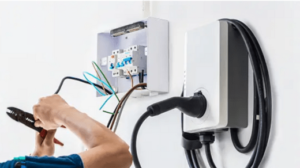how to balance tires at home without equipment
Balancing tires at home without equipment can be challenging and less precise than using specialized tools, but it’s possible to improve balance to some extent. Here’s a basic method using some common household items:
Tools and Materials You’ll Need:
- Car jack and jack stands
- Lug wrench
- Marker or chalk
- A level surface (e.g., a garage floor)
- Weights (e.g., adhesive wheel weights or similar)
Steps:
- Ensure Safety: Make sure you’re working in a safe environment. Park your car on a level surface and engage the parking brake.
- Jack Up the Car: Use a car jack to lift one side of the vehicle. Make sure to follow proper safety procedures, including using jack stands to support the car securely. Only work on one tire at a time.
- Loosen Lug Nuts: Using a lug wrench, slightly loosen the lug nuts on the wheel you want to balance. Do not remove them completely at this stage.
- Mark the Tire and Rim: Use a marker or chalk to make a mark on the tire sidewall and a corresponding mark on the wheel rim. Make the marks easily visible so you can track them during the balancing process.
- Rotate the Tire: Carefully rotate the tire by a quarter turn (90 degrees) on the wheel. This means that the original tire mark and rim mark will no longer align.
- Release Air Pressure: Release a small amount of air from the tire. This can help shift the weight distribution slightly and potentially improve balance. Don’t release too much air, as you’ll need to maintain proper tire pressure.
- Check for Balance: Place the wheel and tire assembly back on the vehicle and hand-tighten the lug nuts. Lower the car off the jack stands and onto the ground.
- Test Drive: Take a test drive at low speeds, preferably on a quiet road or parking lot. Pay attention to any vibrations or wobbling in the steering wheel or through the vehicle. If the balance has improved, you may not feel as much vibration.
- Repeat as Needed: If you still experience vibrations, you can repeat the process by marking and rotating the tire again, making further adjustments. Experiment with different quarter-turn positions and air pressure adjustments until you achieve a noticeable improvement in balance.
- Final Tightening: Once you’re satisfied with the balance, tighten the lug nuts to the manufacturer’s recommended torque specifications.
While this method can help improve tire balance to some extent, it’s not as precise as using professional balancing equipment available at auto shops. If you continue to experience significant balance issues or vibrations after attempting this method, it’s advisable to have your tires professionally balanced to ensure safe and smooth driving. Properly balanced tires are essential for vehicle safety and performance.
You may also read :
https://toplinepost.com/how-to-care-for-flexible-partial-dentures/
https://toplinepost.com/how-to-become-a-foursquare-pastor/
https://toplinepost.com/how-to-become-a-guardian-ad-litem-in-ohio/
https://toplinepost.com/how-to-become-a-portable-building-dealer/








